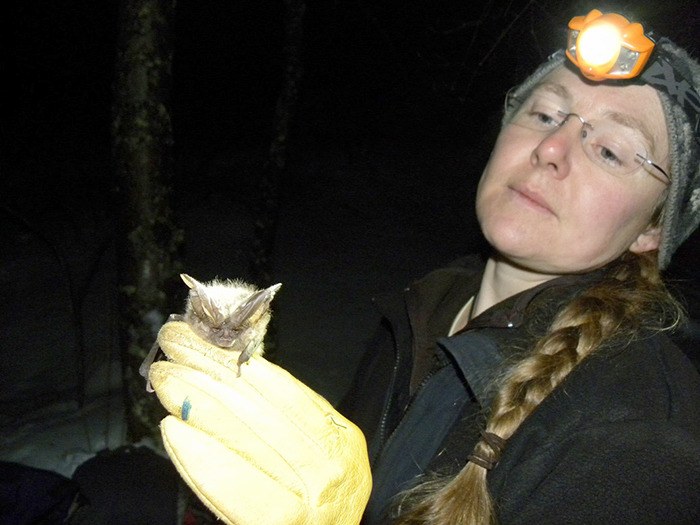Biologists are on the lookout for unexpected activity among bat species residing in the Columbia Valley, as the possible arrival of White Nose Syndrome could pose a serious threat.
The illness, which causes hyperactivity among North American bat populations, is causing alarming fatality rates in the continent.
“In some bat populations in the United States, it’s wiped out 95 per cent of some species in some caves, so it really is a lethal disease,” said Angus Glass, the communications coordinator for the Columbia Region Fish and Wildlife Compensation Program.
Dr. Cori Lausen, one of BC’s leading bat biologists, will be in Invermere on Thursday, March 7 to offer a free presentation on bat ecology and the “unprecedented conservation threats” facing bat populations in North America. The 90-minute session takes place in the David Thompson Secondary School theatre at 7 p.m.
“We need to find out as much about local bat populations and their hibernacular over-wintering as much as possible before White Nose Syndrome gets here,” said Glass. “Cori’s digging up some really interesting information about winter activity with bats. Many people thought that they basically hibernate for five months of the year; Cori’s finding out that bats typically are more active than usually, but with White Nose Syndrome, it could make them [even] more active.”
As biologists only recently discovered that Canadian bats are relatively active during the winter, the symptoms of the syndrome seem to play a fatal role during the cold months.
“The more we know about these things, the better solutions we can come up with to slow the spread,” said Glass. “It’s just like invasive weeds, the more knowledge that we have the better we can cope with them.”
Glass says the disease is most often spread by humans traveling from one mine or cave to another and transmitting contaminated soil, “especially in winter periods when the bats are in there,” he said.
“What [White Nose Syndrome] does, is it typically makes the bat more active in winter than they otherwise should be; they should be just trying to look after their own resources and make sure they survive through winter, but with White Nose Syndrome, it could make them more active.”
Although White Nose Syndrome resembles certain human illnesses, there are no known cases of human contraction. If White Nose Syndrome spreads northward into Canada, Glass warns of larger effects.
“[Bats are] pretty critical with the role they play in their ecosystem,” he said. “They’re important pollinators and eat lots of insects.”
The presentation, titled Bats active in winter – and in crisis? will appeal to those interested in learning about bat ecology, and anyone fascinated with nature and wildlife, Glass said.
Those seeking more information about the seminar can contact the Columbia Region office for BC Hydro at 250-365-4551. No registration is required.
